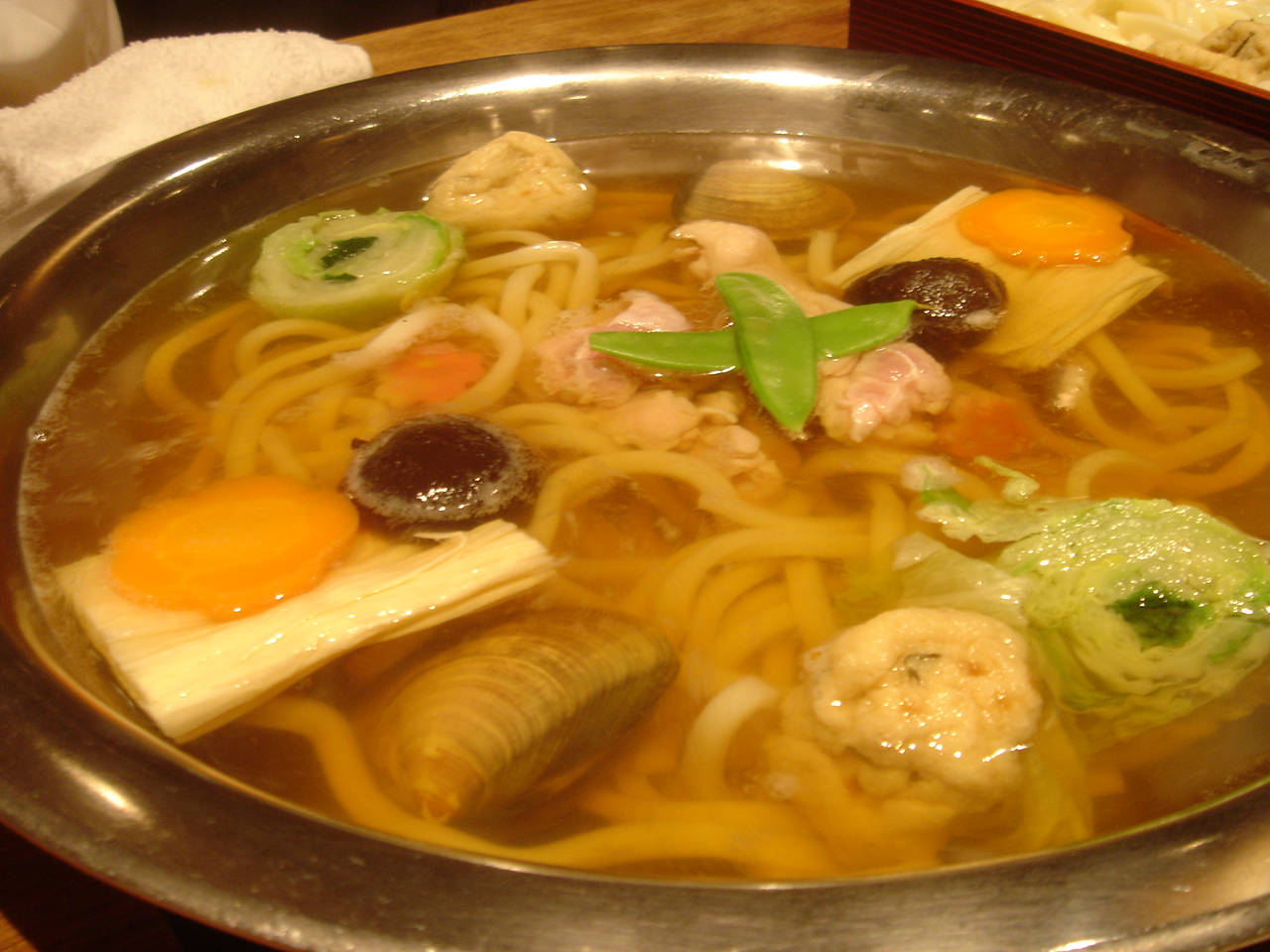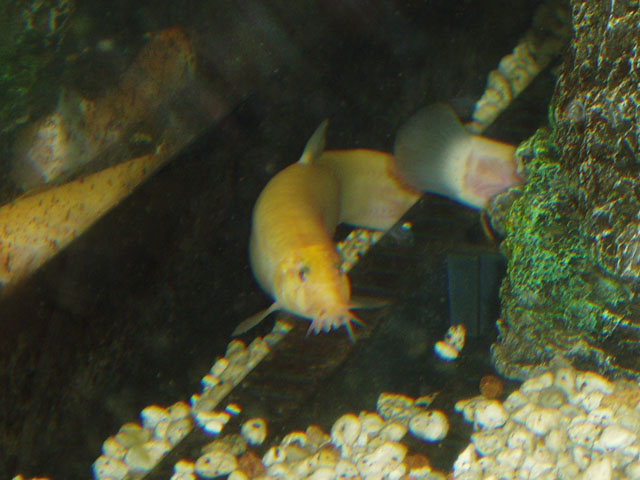|
Dojō Nabe
''Dojo nabe'' (Japanese: 泥鰌鍋 or ドジョウ鍋; dojō nabe) is a Japanese ''nabemono'' dish. To prepare the dish, pond loaches are cooked in a hot pot. The freshwater fishes are either killed ahead of cooking or are first soaked in cold sake and then cooked alive. See also * ''Chueo-tang'', Korean pond loach soup * ''Ikizukuri'', the preparation of sashimi from living animals * '' Odori ebi'', shrimp eaten alive in Japanese cuisine * Drunken shrimp, shrimp eaten alive in Chinese cuisine * ''Sannakji'', octopus eaten alive in Korean cuisine * Yin Yang fish, partially deep-fried fish eaten alive in mainland China and Taiwanese cuisine Taiwanese cuisine (, Bopomofo:ㄊㄞˊㄨㄢˉㄌㄧㄠˋㄌㄧˇ, or , Bopomofo:ㄊㄞˊㄨㄢˉㄘㄞˋ) has several variations. The earliest known cuisines of Taiwan are that of the Taiwanese indigenous peoples. Over hundred years of histor ... * '' Odorigui'' References External links ドジョウ鍋– ''YouTube'' Japanese ... [...More Info...] [...Related Items...] OR: [Wikipedia] [Google] [Baidu] |
:Category:Japanese Words And Phrases ...
{{Commons Words and phrases by language Words Words Words A word is a basic element of language that carries an objective or practical meaning, can be used on its own, and is uninterruptible. Despite the fact that language speakers often have an intuitive grasp of what a word is, there is no conse ... [...More Info...] [...Related Items...] OR: [Wikipedia] [Google] [Baidu] |
Nabemono
''Nabemono'' (鍋物, なべ物, ''nabe'' "cooking pot" + ''mono'' "thing"), or simply ''nabe'', is a variety of Japanese hot pot dishes, also known as one pot dishes and "things in a pot". Description Nabemono are stews and soups containing many types of ingredients that are served while still boiling. Because of that, Nabe is typically enjoyed in cold days or the winter. In modern Japan, nabemono are kept hot at the dining table by portable stoves. The dish is frequently cooked at the table, and the diners can pick the cooked ingredients they want from the pot. It is either eaten with the broth or with a dip. Further ingredients can also be successively added to the pot. There are two types of nabemono in Japan: lightly flavored stock (mostly with kombu) types such as ''yudōfu'' (湯豆腐) and ''mizutaki'' (水炊き), eaten with a dipping sauce (''tare'') to enjoy the taste of the ingredients themselves; and strongly flavored stock, typically with miso, soy sauce, dash ... [...More Info...] [...Related Items...] OR: [Wikipedia] [Google] [Baidu] |
Pond Loach
The pond loach (''Misgurnus anguillicaudatus''), also known as the Dojo loach or oriental weatherfish, is a freshwater fish in the loach family Cobitidae. They are native to East Asia but are also popular as an aquarium fish and introduced elsewhere in Asia and to Europe, America and Australia. The alternate name weather loach is shared with several other Cobitidae, including the other members of the genus '' Misgurnus'' and the spotted weather loach (''Cobitis taenia'', commonly known as spined loach). This term comes from their ability to detect changes in barometric pressure and react with frantic swimming or standing on end. This is because before a storm the barometric pressure changes, and this is known to make these fish more active. The pond loach also comes in a variety of colors, such as pink, orange, albino and gray. Description Like many other loaches, pond loaches are slender and eel/snake-like. They can vary in colour from yellow to olive green, to a common light b ... [...More Info...] [...Related Items...] OR: [Wikipedia] [Google] [Baidu] |
Chueo-tang
''Chueo-tang'' () or loach soup is a ''guk, tang'' (soup) made from pond loach, a freshwater fish. * The southwestern Korean city of Namwon is known for its version of the dish. Etymology ''Chueo'' () is a nickname for pond loach, called ''mikkuraji'' () in Korean. ''Guk, Tang'' () means soup. History and tradition As irrigated rice paddies are drained after ''chubun'' (autumnal equinox), chubby pond loaches, ready for hibernation, are easily caught in the ditches dug around paddy fields. ''Chueo-tang'' (추어탕) is often a featured dish in banquets for the elderly. In Seoul, Hanyang (now Seoul) during the Joseon era, the guild of licensed panhandlers mandated that its members beg only for ''bap (food), bap'' (cooked rice), not ''banchan'' (side dishes) or ''guk'' (soup). (The practice was intended to maintain dignity and differentiate members from unlicensed beggars.) As an accompaniment to the rice, Panhandlers hunted pond loaches and made ''chueo-tang.'' They were al ... [...More Info...] [...Related Items...] OR: [Wikipedia] [Google] [Baidu] |
Ikizukuri
, also known as , (roughly translated as "prepared alive") is the preparing of sashimi (raw fish) from live seafood. In this Japanese culinary technique, the most popular sea animal used is fish, but octopus, shrimp, and lobster may also be used. The practice is controversial owing to concerns about the animal's suffering, as it is still alive when served. Preparation and serving The restaurant may have one or several tanks of live sea animals for a customer to choose from. There are different styles in which a chef may serve the dish but the most common way is to serve it on a plate with the filleted meat assembled on top of the body. Ikizukiri fish may be prepared with only three knife cuts by the chef. They are usually presented with the head still whole so that customers are able to see the continuing gill movements. Legality Ikizukuri is outlawed in Australia and Germany. See also * Eating live seafood * Pain in fish * Pain in crustaceans * Odorigui, the consumption of ... [...More Info...] [...Related Items...] OR: [Wikipedia] [Google] [Baidu] |
Odori Ebi
is a sushi delicacy of Japan, and a form of sashimi. The sushi contains baby shrimp that are still alive and able to move their legs and antennae while being eaten. The meal is prepared quickly to keep the shrimp alive, and when it is eaten the shrimp are usually dunked into sake so as to intoxicate the shrimp, then into a special dipping sauce, and finally quickly chewed to kill it. The shrimp can be served either whole or shelled with the head removed; the head and shell are sometimes quickly deep fried and served on the side. Consuming uncooked shellfish may be a serious health hazard due to the risk of paragonimiasis. See also * Ikizukuri, the preparation of sashimi from living animals * Sannakji, raw octopus eaten in Korean cuisine * Drunken shrimp, shrimp sometimes eaten alive in Chinese cuisine Chinese cuisine encompasses the numerous cuisines originating from China, as well as overseas cuisines created by the Chinese diaspora. Because of the Chinese diaspo ... [...More Info...] [...Related Items...] OR: [Wikipedia] [Google] [Baidu] |
Drunken Shrimp
Drunken shrimp (), also known as drunken prawns, is a popular dish in parts of China based on freshwater shrimp that are sometimes eaten cooked or raw. The shrimp are immersed in liquor to make consumption easier. Different parts of China have different recipes for the dish. For example, the shrimp are sometimes soaked in alcohol and then cooked in boiling water rather than served live, and in other recipes cooked shrimp are marinated in alcohol after they are boiled. Another version is based on shrimp that are submerged in a bowl of rice wine. The rice wine forces the shrimp to expel their wastes. Once done, the shrimp are taken from the bowl, de-shelled and eaten alive. Consuming uncooked freshwater shrimps may be a serious health hazard due to the risk of paragonimiasis. See also *''Odori ebi is a sushi delicacy of Japan, and a form of sashimi. The sushi contains baby shrimp that are still alive and able to move their legs and antennae while being eaten. The meal is ... [...More Info...] [...Related Items...] OR: [Wikipedia] [Google] [Baidu] |
Chinese Cuisine
Chinese cuisine encompasses the numerous cuisines originating from China, as well as overseas cuisines created by the Chinese diaspora. Because of the Chinese diaspora and historical power of the country, Chinese cuisine has influenced many other cuisines in Asia and beyond, with modifications made to cater to local palates. Chinese food staples such as rice, soy sauce, noodles, tea, chili oil, and tofu, and utensils such as chopsticks and the wok, can now be found worldwide. The preferences for seasoning and cooking techniques of Chinese provinces depend on differences in historical background and ethnic groups. Geographic features including mountains, rivers, forests, and deserts also have a strong effect on the local available ingredients, considering that the climate of China varies from tropical in the south to subarctic in the northeast. Imperial royal and noble preference also plays a role in the change of Chinese cuisine. Because of imperial expansion and t ... [...More Info...] [...Related Items...] OR: [Wikipedia] [Google] [Baidu] |
Sannakji
''San-nakji'' () is a variety of ''Hoe (food), hoe'' (raw dish) made with Octopus minor, long arm octopus (''Octopus minor''), a small octopus species called ''nakji'' in Korean and is sometimes translated into "baby octopus" due to its relatively small size compared to the Enteroctopus dofleini, giant octopus (''Enteroctopus dofleini''). The octopuses are most commonly killed before being cut into small pieces and served, with the nerve activity in the octopus' tentacles making the pieces move posthumously on the plate whilst served. The octopus' highly complex nervous system, with two-thirds of its neurons localised in the nerve cords of its arms, lets the octopus show a variety of reflex actions that persist even when they have no input from the brain. Less commonly, a live octopus is eaten whole. The dish is sprinkled with sesame oil and toasted sesame seeds. Eating Because the suction cups on the arm pieces are still active when the dish is served, special care should be t ... [...More Info...] [...Related Items...] OR: [Wikipedia] [Google] [Baidu] |
Korean Cuisine
Korean cuisine has evolved through centuries of social and political change. Originating from ancient agricultural and nomadic traditions in Korea and southern Manchuria, Korean cuisine reflects a complex interaction of the natural environment and different cultural trends. Korean cuisine is largely based on rice, vegetables, seafood and (at least in South Korea) meats. Dairy is largely absent from the traditional Korean diet. Traditional Korean meals are named for the number of side dishes (반찬; 飯饌; '' banchan'') that accompany steam-cooked short-grain rice. Kimchi is served at nearly every meal. Commonly used ingredients include sesame oil, ''doenjang'' (fermented bean paste), soy sauce, salt, garlic, ginger, '' gochugaru'' ( pepper flakes), ''gochujang'' (fermented red chili paste) and napa cabbage. Ingredients and dishes vary by province. Many regional dishes have become national, and dishes that were once regional have proliferated in different variat ... [...More Info...] [...Related Items...] OR: [Wikipedia] [Google] [Baidu] |
Yin Yang Fish
Yin Yang fish (; also called ''dead-and-alive fish'') is a dish which consists of an oil-fried whole fish (usually carp) whose head remains alive even after its body has been cooked. During preparation, the fish is scaled and gutted before its body is dipped into frying oil that its head is protected from. The fish is then covered in sauce and served on a plate.(Traditional Chinese) A restaurant in Chiayi, Taiwan sparked outrage when it began serving the dish in 2007, with a city official and members of the public criticizing the cruelty of the dish. Following public outcry, the dish was subsequently removed from the menu. A video of a dish in 2009 was condemned by the People for the Ethical Treatment of Animals calling a video showcasing it "disgusting". See also * Cruelty to animals *Ikizukuri, live fish served as sashimi in Japanese cuisine *Drunken shrimp, shrimp sometimes eaten alive in Chinese cuisine Chinese cuisine encompasses the numerous cuisines originating f ... [...More Info...] [...Related Items...] OR: [Wikipedia] [Google] [Baidu] |




